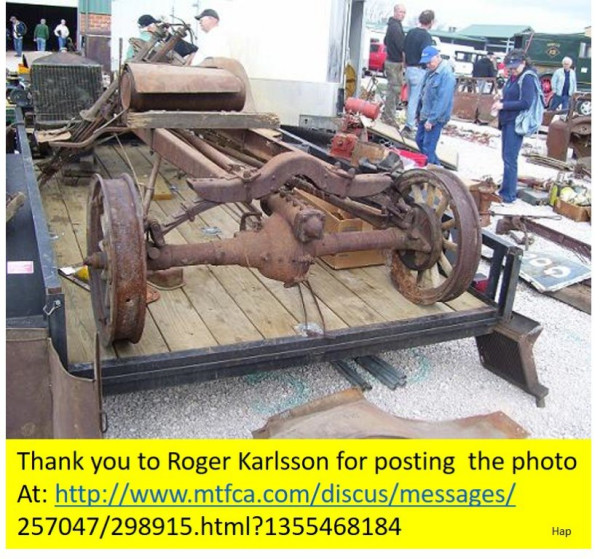Basil,
Welcome to the forum and hobby! The information of above is great. One of the key things many of us have learned the hard way is: "It comes apart much faster than it goes back together." So the advice of fixing one area before taking the next area apart helps many us stay motivated and not get overwhelmed with the task.
As mentioned above, posting some photos would be a great help. As a new person to T's you will also discover that what people say the year of a car or truck is does not always line up with what it really is (or mostly is -- since most Ts have parts from various years). A 1909-1927 engine and transmission will fit in any 1909 - 1927 T or TT (stands for Ton Truck) with minor changes. Most other parts were standard for a certain number of years but often but not always fit lots of other years with no or only minor changes needed. Henry Ford wanted his Ts & TTs to be repairable forever.
And while many of us are thinking your dump truck will be on a Ton Truck (TT) chassis -- I have seen a few pickups (as well as trailers) where the bed was modified so they could dump a much smaller load of dirt, gravel, etc. And there were kits to convert a standard car chassis to a 1 Ton or more truck. Smith Form a truck was a common one (see:
http://www.mtfca.com/discus/messages/11 ... 1291412425 but there were several other popular ones). It would be good to know if you have a standard car chassis, a car chassis converted to Ton or larger truck, or the heavier duty all assembled by the Ford factory Ton Truck chassis. And as pointed out earlier in the thread lots of companies and even the local black smith could build and install a cab & bed on the Ford chassis for the owner. Ford also announced the availability of their own Ton Truck body (cab) on Jan 9, 1924 for the C cab and on Apr 9, 1924 for the closed cab. It gets a little confusing as Ford use the 1925 style front fenders on the 1926 & 1927 Ton Trucks as well as the hood and cowl styles.
Some clues to look for:
Ford Model T Car rear axle generally looks similar to the photo below:
Ford Model T Ton truck rear axle generally looks similar to the photo below note this one has an accessory Ruckstell rear axle that adds a fatter looking half to the USA driver's side of the rear axle. Note the drive shaft come into the top of the rear axle house and that is called a worm drive rear axle.

Depending on how bad the remaining parts are on your vehicle, it might be less expensive to purchase a better truck, I have a 1915 touring car that was cut off and made into a pickup truck. It actually can run and be driven (really poor steering). But it needs just about everything. The engine runs but needs a total rebuild. The block is stamped with the 1915 serial number but has a 1916 casting date. So probably not the engine block to pay to have rebuilt. The rear seat area was removed and needs to be replaced (I have what I believe will work). The body needs to be rewooded. The front fenders are the later 1924-27 TT and 1924-25 car style and the rear fenders are the 1917-1925 car style. I still hope to fix it up. I will almost certainly have more money in it than it will ever sell for. But it is the fist car I ever drove. I have lots and lots of memories of my Dad and me working on, washing, and driving that car. So the sentimental value is worth it to me. But if I saw one like it for sale at a bargain, I would pass and look for a car in better condition.
See also the posting removing a T from Moth Balls at Steve Jelf’s site:
https://dauntlessgeezer.com/DG93.html
Steve also has a lot of other good T info starting at the page at:
https://dauntlessgeezer.com/DG52.html
. It sounds like you have a bigger job than that, but it will give you some ideas. When my Dad purchased a 1915 that had been outside in a wrecking yard for years the engine was frozen. But the spark plugs were still in, the hood was on covering the engine, the manifolds were on it and the oil filler cap was still on it so it never filled up with water on the inside of the engine where the rods, pistons etc. were. About a month of soaking the pistons (he used kerosene poured in the spark plug holes – there are much better choices today) the engine freed up. He was lucky. He was able to clean things up and get it running. I had a 1928-31 Model A engine that was frozen and it took about 2 months of soaking with kerosene to free it up – but once free it was clear the engine needed lots of work. That one did not get running.
Good luck with T and have fun.
Respectfully submitted,
Hap l9l5 cut off